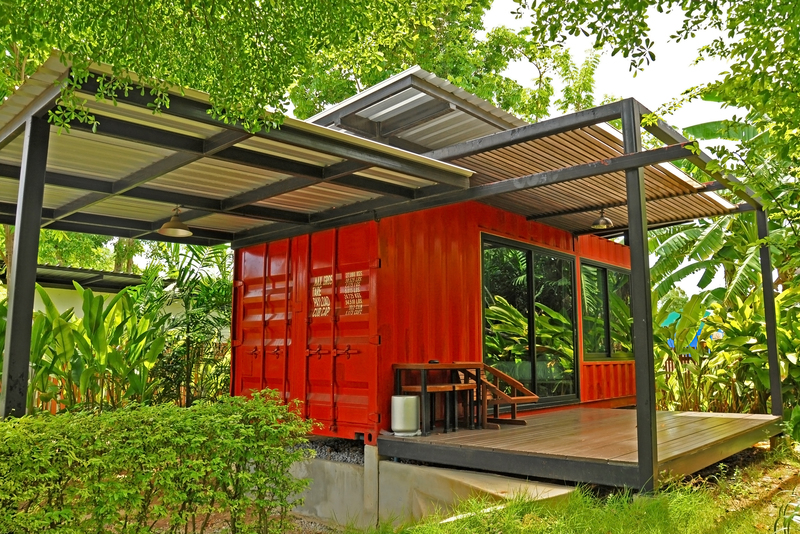Understanding Unsafe Plastics: What You Need to Know
Plastics have revolutionized modern living, offering unmatched convenience in packaging, storage, and daily use. However, not all plastics are created equal. Growing evidence suggests that many commonly used plastics are unsafe for health and the environment. This article dives deep into the world of unsafe plastics you need to evade, their risks, and how to make safer choices for you and your family.

What Are Unsafe Plastics?
Unsafe plastics refer to polymers that contain or leach harmful chemicals, posing risks to humans, animals, and ecosystems. These materials are found everywhere, from food containers and toys to medical devices and household products. With the sheer prevalence of plastics in our daily lives, understanding which types are dangerous is essential.
How to Identify Dangerous Plastics
Most consumer plastic products have a resin identification code--a number inside the recycling triangle. Recognizing these codes is the first step in distinguishing safe plastics from those you should avoid.
- 1 (PETE or PET) - Polyethylene Terephthalate
- 2 (HDPE) - High-Density Polyethylene
- 3 (PVC) - Polyvinyl Chloride
- 4 (LDPE) - Low-Density Polyethylene
- 5 (PP) - Polypropylene
- 6 (PS) - Polystyrene
- 7 (Other) - Miscellaneous plastics
Unsafe plastics typically include codes 3, 6, and 7. Let's take a closer look at these hazardous polymers and what makes them especially dangerous.
1. Polyvinyl Chloride (PVC) - Code 3
Why Is PVC Among the Plastics to Avoid?
PVC is widely used in pipes, packaging, toys, and even clothing. However, it is loaded with dangerous chemical additives, such as phthalates and heavy metals (e.g., lead and cadmium). These chemicals help soften PVC but are notorious for leaching into environments and foods, especially with heat or over time.
- Health Risks: Exposure to PVC has been linked with hormone disruption, developmental issues in children, reproductive problems, and cancer potential.
- Environmental Impact: The manufacturing and incineration of PVC release dioxins--highly toxic, persistent environmental pollutants.
- Product Examples: Shower curtains, plastic pipes, flooring, cling wrap, children's toys, and packaging materials.
PVC plastic remains one of the most unsafe plastics due to its chemical additives and harmful byproducts.
2. Polystyrene (PS) - Code 6
The Dangers of Polystyrene
Polystyrene, commonly known as Styrofoam, is used in disposable coffee cups, take-out containers, plates, egg cartons, and packing materials. While it's convenient, polystyrene is one of the most hazardous plastics you need to evade.
- Chemical Concern: Contains styrene, a possible human carcinogen, especially when heated or used with acidic/greasy foods.
- Food Safety: Leaching increases with hot or fatty foods, risking contamination.
- Environmental Damage: Polystyrene is highly non-biodegradable and pollutes water bodies and landfills for hundreds of years.
- Examples: Foam food containers, plastic cutlery, packing peanuts, and CD cases.
Due to its widespread use and lasting environmental presence, avoiding polystyrene plastic in food applications is strongly recommended.
3. Other Plastics (Code 7) - Bisphenol-A (BPA), Polycarbonate & More
Mixed and Unregulated Plastics
Plastics marked as number 7 are a catch-all for "other" plastics and often contain polycarbonates and epoxy resins, which can leach Bisphenol-A (BPA) and similar chemicals.
- BPA Exposure: BPA is a potent endocrine disruptor and has been linked to obesity, heart disease, reduced fertility, and developmental effects.
- Product Examples: Water cooler bottles, baby bottles (pre-2012), food can linings, sports equipment, and dental sealants.
- Unregulated Risks: "Other" plastics may harbor new, less studied chemicals that pose yet-unknown risks.
Key Point: Whenever you see the number 7 or "PC" (for polycarbonate) on plastics, especially those touching food or beverages, it's safest to evade these unsafe plastics.
Compounds That Make Plastics Dangerous
Besides the resin codes, the specific additives used in plastics are paramount in determining their safety. Some chemicals that make plastics among the most unsafe materials include:
- Phthalates: Used to soften vinyl plastics, phthalates are well-documented hormone disruptors.
- BPA and Bisphenol S (BPS): Used in polycarbonates and epoxy linings, these are linked with reproductive and developmental problems.
- Styrene: From polystyrene, it can leach out and is a suspected carcinogen.
- Heavy Metals: Lead, cadmium, and organotins in some PVC materials risk toxicity during use and disposal.
All these substances can enter the body via ingestion, inhalation, or skin contact, making knowledge about hazardous plastics a public health priority.
How Do Unsafe Plastics Affect Your Health?
Understanding the full breadth of health risks from unsafe plastics is crucial. The following impacts are well evidenced by scientific research:
- Hormone Disruption: Many plastics contain chemicals that mimic estrogen or block hormones, impacting puberty, fertility, and metabolism.
- Developmental Disorders: Children and developing babies are especially vulnerable to phthalates, BPA, and dioxins.
- Cancer Risk: Dioxins, styrene, and BPA exposures have been associated with increased cancer risks.
- Obesity and Diabetes: Endocrine-disrupting plastics are linked to weight gain and impaired glucose regulation.
- Immune and Neurological Effects: Chronic exposure can weaken immunity and affect cognitive function.
The risk is compounded by cumulative, long-term exposure--especially with repeated use of questionable plastics in food and drink.
Unsafe Plastics in Everyday Life - Where Are They Hidden?
Dangerous plastics are not always obvious. Here are common household items where unsafe plastics lurk:
- Microwavable containers (with codes 3, 6, or 7)
- Plastic wrap (especially "cling film" made with PVC)
- Disposable cutlery and plates (polystyrene/styrofoam)
- Bottled water (polycarbonate or #7 plastics)
- Children's toys and teethers (older or soft vinyl toys)
- Canned food linings (often epoxy resins with BPA)
- Personal care products (soft squeezy bottles, beauty containers)
- Some non-stick cookware coatings
Being an informed consumer means learning to spot and evade these hazardous plastics at the point of purchase.
Evading Hazardous Plastics: Tips for a Safer Home
1. Know Your Resin Codes
Check the bottom of containers. Prefer codes 1, 2, 4, and 5, which are considered less hazardous. Steer clear of 3, 6, and 7.
2. Switch to Safer Alternatives
- Glass: Ideal for food storage--non-porous and does not leach chemicals.
- Stainless Steel: Excellent for bottles, thermoses, and lunchboxes.
- Food-safe Silicone: Considered stable and safe for most cooking applications.
- Certified BPA-free plastics: Still check labeling for other chemicals like BPF or BPS.
3. Avoid Heating Plastics
Never microwave food in plastic containers unless they are clearly marked as microwave-safe and are free from codes 3, 6, or 7.
4. Ditch Single-Use Plastics
Disposable cutlery, plates, and cups--especially made with polystyrene--are best replaced with reusable versions made from safer materials.
5. Be Wary of "Greenwashing"
Some products are labeled "BPA-free" but still contain other bisphenols or harmful additives. Research brands and ask for third-party safety certifications.
6. Stay Informed and Updated
Plastics research is evolving rapidly. Stay current with medical advice and consumer advocacy groups regarding new findings on toxic plastics.
International Regulations and Bans
The dangers of certain plastics are recognized globally:
- Many countries have banned BPA in baby bottles and sippy cups.
- The European Union restricts phthalates in children's toys and PVC articles.
- Several cities have banned polystyrene food containers and foam cups.
- Plastic bag bans are growing to curb environmental contamination.
Nonetheless, some unsafe plastic products are still widespread in many countries, making personal vigilance essential.
Environmental Impact of Unsafe Plastics
It's not only human health at stake. Persistent, non-biodegradable plastics like PVC and polystyrene pollute oceans and landscapes, harming wildlife. Toxic additives bioaccumulate in fish and marine mammals, creating a feedback loop to humans who consume seafood.
- Microplastics--fragments of larger plastics--are found in water, air, and food supplies globally.
- Chemical leachates from unsafe plastics contaminate soil and waterways, affecting crop safety.
- Plastic debris kills seabirds, turtles, and fish via ingestion and entanglement.
Evading dangerous plastics is as much about protecting ecosystems as it is about safeguarding individual health.

FAQ on Unsafe Plastics
Which plastics are the safest to use?
Generally, plastics labeled with codes 1 (PET), 2 (HDPE), 4 (LDPE), and 5 (PP) are considered safer, especially for food and beverage storage. However, even these should not be subjected to excessive heat without proper guidance.
What about "microwave-safe" plastics?
"Microwave-safe" only means the plastic won't melt, not that it won't leach chemicals. Always try to use glass or ceramic in the microwave for maximal safety.
How can I tell if a plastic contains BPA or phthalates?
Plastics with code 7 or labels "PC" often have BPA. Soft, flexible plastics may contain phthalates. Look for products labeled "BPA-free" and "phthalate-free", but be aware of substitutes that might also be harmful.
Should I throw away all plastics with codes 3, 6, or 7?
Especially for food or drinking use, it's best to *phase out* these plastics. At the very least, avoid exposing them to heat, acidic foods, or long-term use.
Conclusion: Your Health, Your Choices
The science is clear: unsafe plastics are not worth the risk. While total avoidance may be difficult, informed changes--like switching to glass and stainless steel, avoiding resins 3, 6, and 7, and reducing single-use plastic dependency--bring long-lasting health and environmental benefits. Stay vigilant and share knowledge; the journey to a safer, healthier lifestyle starts with the plastics you choose to evade today.
Remember: Your choices matter, both for your health and the world around you. Stay informed and evade unsafe plastics at every opportunity.